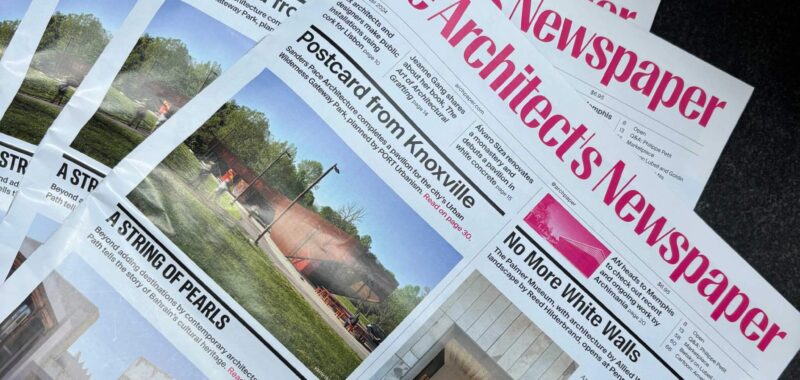Summer supplies a humid, doldrums-like air to New Yorkers who remain in the city. Kept alive by window units, one resorts to relaxed dress codes and limited oven use to stay comfortable. There are also the cool marble insides of cultural institutions. Or the joyful arcs of a loosened fire hydrant, which seem like a stereotype until you encounter them in person, as I recently did on my street in Brooklyn. And, of course, there are New York’s miles of beaches and its constellation of public pools, the latter of which are slated to receive over $1 billion in funding through the city’s new Let’s Swim NYC initiative, part of the larger Vital Parks framework. One recently completed improvement is Astoria Pool, the city’s largest and oldest facility, which received almost $19 million in upgrades while maintaining its stately art moderne look.
“Summertime is a good time to re-examine New York and to receive again the gift of privacy, the jewel of loneliness,” E. B. White wrote in his classic 1949 essay “Here Is New York.” “In summer the city contains (except for tourists) only die-hards and authentic characters. No casual, spotty dwellers are around, only the real article. And the town has a somewhat relaxed air, and one can lie in a loincloth, gasping and remembering things.”
And, dressed in workplace-appropriate attire, there’s so much to recollect: This year, New York quietly celebrates its 400th birthday. In the summer of 1624, 30 Dutch families arrived to colonize what would become New York; most were dispatched to sites along area rivers (the Hudson, Delaware, and Connecticut), but some occupied what became Governors Island, and “there was at least one farm on nearby Manhattan,” according to Gotham: A History of New York City to 1898. (Because of the slow conquest, quadricentennial events are slated to continue into 2025 and 2026.) To mark the occasion, AN prints architecture student turned artist James Cook’s “typiction” of Lower Manhattan. There’s some more summer fun here in the form of a puzzle and cartoon, which both take up the Focus section’s theme of glass.
It’s good to leave New York from time to time: The features in this issue concern development as seen through the lenses of travel, recreation, and cultural heritage. Vernon Mays writes about a new pavilion and park in Knoxville, Tennessee, by Sanders Pace Architecture and PORT Urbanism, and Timothy Schuler assesses Walker Warner’s redesign of Kona Village in Hawaii. Plus, Ali Ismail Karimi reports on the completion of the Pearling Path in Bahrain, with buildings designed by Studio Anne Holtrop, Christian Kerez, and Office KGDVS, among others. And I appreciate a roadside parking structure near Houston, designed by EASTON COMBS.

As White wrote, “it is a miracle that New York works at all.” The city is beset with all manner of crises, which include those he described in the 1940s plus fresh hells. (Perhaps now our most urgent existential threat is not nuclear apocalypse but climate collapse?) Also, the battle between the city and its handlers in Albany continues: Governor Kathy Hochul disappointingly pulled the plug on congestion pricing, leaving a $15 billion hole in the MTA’s budget. Even poolgoers to the aforementioned Astoria Pool faced lengthy wait times because only portions of the large pool were open, due to an ongoing lifeguard shortage. Mid-June, the city had 180 lifeguards for 50 public outdoor pools, while 400 are needed to fully staff the facilities, according to reporting from Gothamist. When I visited in mid-July, there was still a long line to enter, and sections of the pool remained closed to swimmers, though the water was refreshing. Across many initiatives, NYC can and should do better.
Speaking of doing better: In addition to news, studio visits, interviews, and critiques, see reader (and contributor) responses to my interview with Pascale Sablan from the previous issue. As they articulate, the piece minimized the experiences of the victims of David Adjaye’s alleged sexual misconduct, like those of Toni M. Isidore Smart, who I wrote about in AN last August. She was one of the three women from the Financial Times investigation and later bravely chose to come forward and share her story.
Like newspapers, cities are places of collision. They can also be places of escape. “New York blends the gift of privacy with the excitement of participation,” White wrote. This city is “peculiarly constructed to absorb almost anything that comes along…without inflicting the event on its inhabitants; so that every event is, in a sense, optional, and the inhabitant is in the happy position of being able to choose his spectacle and so conserve his soul.” Maybe they didn’t get FOMO back then? In any case, I wish you success with your soul conservation this summer.

